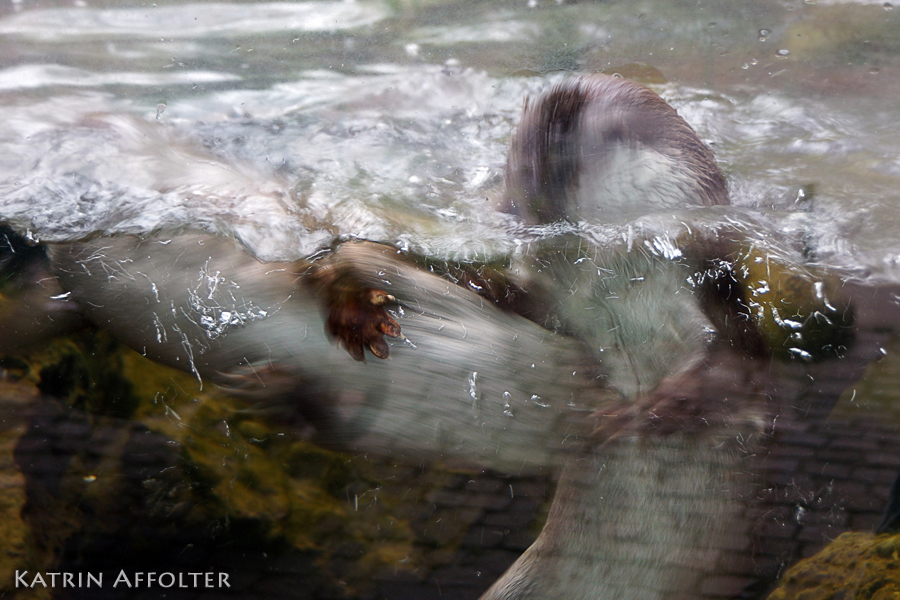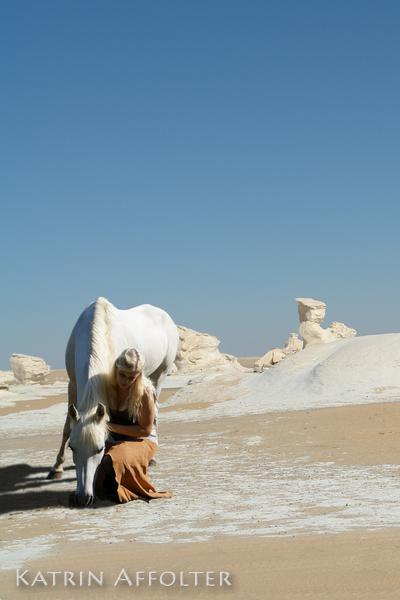Did you ever wonder what I do with all the photos I take?
 The answer is simple: "enjoy them daily". It’s not that I take the photos, choose a few of them to put here on my webpage and afterwards forget about them. I do quite a lot with them: I put them on my webpage. I create a photo book and a calendar in A3 format for each year. Why did I mention the calendar format? Because at the start of each new year, we cut the photos out of the old calendar and place them on our walls like posters. Sadly, in recent years we had to start to exchange old photos with new ones, empty wall space is rare. And last year we found out you can do your own self-sticking posters. We each ordered four posters for our office – my boyfriend even got a 60x60cm big poster of one of his favorite red panda photo. So yes, I look at the posters quite often. I think only the kitchen is without any photos in our apartment. Otherwise, we enjoy them and our guests are always checking our walls for new photos they didn’t see before – "hide and seek" with photos!
The answer is simple: "enjoy them daily". It’s not that I take the photos, choose a few of them to put here on my webpage and afterwards forget about them. I do quite a lot with them: I put them on my webpage. I create a photo book and a calendar in A3 format for each year. Why did I mention the calendar format? Because at the start of each new year, we cut the photos out of the old calendar and place them on our walls like posters. Sadly, in recent years we had to start to exchange old photos with new ones, empty wall space is rare. And last year we found out you can do your own self-sticking posters. We each ordered four posters for our office – my boyfriend even got a 60x60cm big poster of one of his favorite red panda photo. So yes, I look at the posters quite often. I think only the kitchen is without any photos in our apartment. Otherwise, we enjoy them and our guests are always checking our walls for new photos they didn’t see before – "hide and seek" with photos!
And yes, I do notice that this is only a small part of the photos. I do look at the digital photos too. I love it when I can show them to other peoples. For example, when my parents visit, at some point we always sit together on the sofa, with my laptop connected to the TV, and I can show (off) the photos I toke since the last time they visited.
Are you now wondering how I store them and how I find the photos I want to show?
Obviously, I have to store them somehow. And because I do digital photography since 2004, I have a quite a lot of data. Currently, I have around 500 GB of photos. And with my newest camera, this number increases fast. For example, the last visit to the Papiliorama ended in 8 GB of new photos.
You can imagine, I try to minimize the data I store while not compromising on the quality of the photos. Which means I store the JPG in the highest resolution possible, and for the RAW format files I only recently started to use a tiny bit of compression provided by Sony. Still, I try to reduce the amount of data I have to store. For that, I have a multi-step process in place of what to do when I come home with new photos on my camera:

- I transfer the photos from my memory card(s) to my laptop (and because I’m paranoid I do not delete them from the memory card until later on).
- I go through all photos and delete those which are blurry – and do not have any other meaning to me. There are some not-too-blurry-but-interesting snapshots which I keep.
- I wait at least one day until I start filtering for the best photos. I duplicate these "best of" photos for later usage.
- After I’m done with my "best of" selection, I delete all RAW files which are not in the "best of" selection.
With the new body, I even go a step further and only keep RAW files if I think about printing the photo. For example, photos of my beloved crochet projects are not stored in RAW format at all. - If needed, I will now work with the copies of the best of photos. Usually, I only crop and/or do some minor adaptations for the light. I’m not a big fan of post processing photos, either you took a good photo, or you didn’t. Exceptions are obviously photos taken with the intent of applying "special effects" afterwards.
 To keep track of the steps, I use the file color tags provided by Apple. I start with red, which stands for "imported" and end with green, which stands for "selected, edited and uploaded to my webpage".
To keep track of the steps, I use the file color tags provided by Apple. I start with red, which stands for "imported" and end with green, which stands for "selected, edited and uploaded to my webpage".
Now, my laptop is great, but it cannot store all my photos – it only has 250 GB disk space available. Therefore, I need another solution. What I decided to do is only to keep the most recent year(s) on my laptop, and store older photos at another place. I mentioned it before: I’m paranoid about losing my photos! Because of that, I store them in multiple places. First, I have an external hard disk, where I store all my photos – and I do backups of this external hard disk at the end of each year. This is enough backup if either my laptop, my external hard disk or my backup dies. But, they are all in one place. What happens if there is a fire in my apartment? Yes, I know, paranoid…
For many years, I had a second backup at my dad’s place. Two years ago, instead I switched to a cloud solution and decided to use Dropbox Plus. I came to that decision when I started to struggle to keep more than one year on my laptop. The Dropbox solution has the advantage that I can easily access old photos too. Even if the photos are only in the cloud, I still have the thumbnail photos to search for whichever photo I want to open. Even with the cloud, I still keep my own backups just in case. If you now call me paranoid, I will have to let you know: I’m not! Yes, ok, I am. But at least not without a reason. There was an incident in 2019 where another provider lost all the data of a few hundred customers – without their own backups, the users lost everything they had stored. Something like this should not happen, but the IT world is not perfect – I’m working in it, I’m allowed to say that – and sometimes big errors happen.
Anyway, I try to be on the reasonably safe side – which includes that I only delete the photos from my memory card, when I’m sure that everything is in the Dropbox cloud and at least on my external hard disk or included in a backup.
Sounds like a huge load of data, how do I find any photo in this mess?
Sometimes I wonder about that too… Quite often, I have a great memory and know where to look – in which year – but after 18 years’ worth of photos, it starts to get difficult.
 A few months ago, I came up with the idea to write my own small application with which I can view, tag and search my photos. Yes, I know there are programs like Lightroom and even Sony provides a software. But all of them are missing at least one feature I would like to have – and I do have the knowledge to do it myself. Now I can build it with all the stuff I want and how I want it. So I have this "cool" application, which shows me my folder structure as it is in my Dropbox and has thumbnails for all of the photos. Yes, this sound like a cheap copy of what I already have locally. But, in my application, I have the possibility to add (hierarchical) tags and have a search configured as I like and need it. For example, I can tag a photo of a brown bear and another photo of an ice bear with specific tags, but find them both when I search just for "bear". Or I can search for "Zoo Zürich" and find all the photos of all my visits. I also use two ML models: the first searches for animals in the photo, the second for known people. Both models tag the photos accordingly, and the "people" model uses previous tagged photos as "known people". And because I can add whatever I want, the application also has a map feature where I use the GPS data to show the photos on the map. Pretty neat feature for photos taken during vacations. I’m proud of my application and what it can do, so I will probably write more about it in a separate blog post. It is still "work in progress" and I often add and improve a tiny bit at the weekends, so it grows slowly and I love it.
A few months ago, I came up with the idea to write my own small application with which I can view, tag and search my photos. Yes, I know there are programs like Lightroom and even Sony provides a software. But all of them are missing at least one feature I would like to have – and I do have the knowledge to do it myself. Now I can build it with all the stuff I want and how I want it. So I have this "cool" application, which shows me my folder structure as it is in my Dropbox and has thumbnails for all of the photos. Yes, this sound like a cheap copy of what I already have locally. But, in my application, I have the possibility to add (hierarchical) tags and have a search configured as I like and need it. For example, I can tag a photo of a brown bear and another photo of an ice bear with specific tags, but find them both when I search just for "bear". Or I can search for "Zoo Zürich" and find all the photos of all my visits. I also use two ML models: the first searches for animals in the photo, the second for known people. Both models tag the photos accordingly, and the "people" model uses previous tagged photos as "known people". And because I can add whatever I want, the application also has a map feature where I use the GPS data to show the photos on the map. Pretty neat feature for photos taken during vacations. I’m proud of my application and what it can do, so I will probably write more about it in a separate blog post. It is still "work in progress" and I often add and improve a tiny bit at the weekends, so it grows slowly and I love it.
So back to the original question: No, my photos do not gather digital dust, and I do not forgot about them after a short period of time. I love them, I love looking at them and I love sharing them with other people!